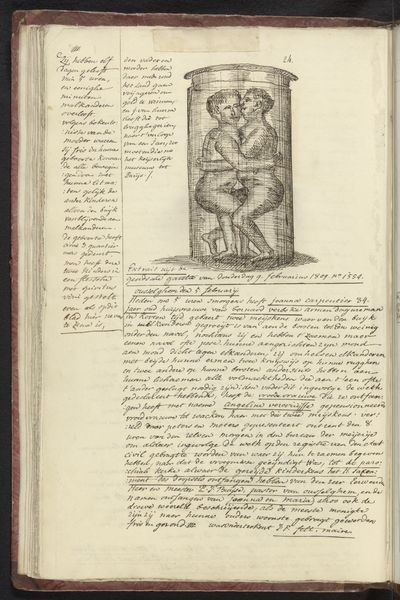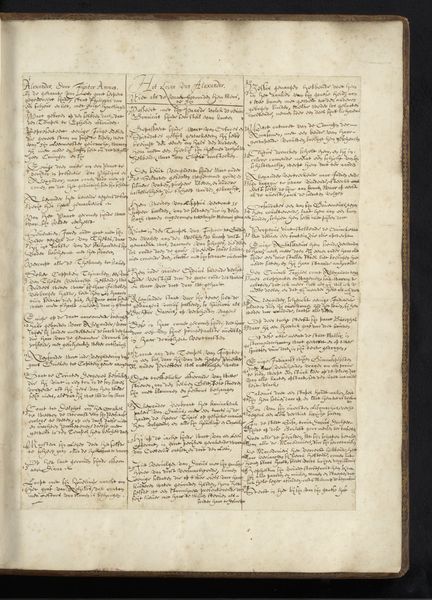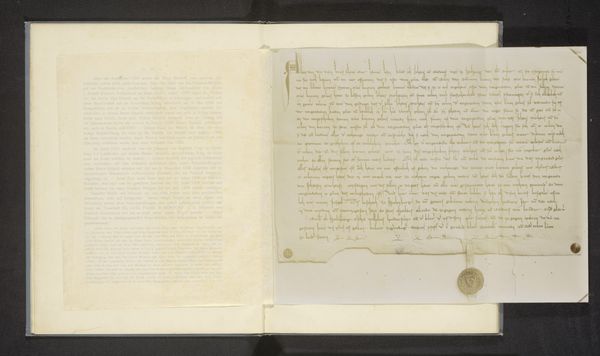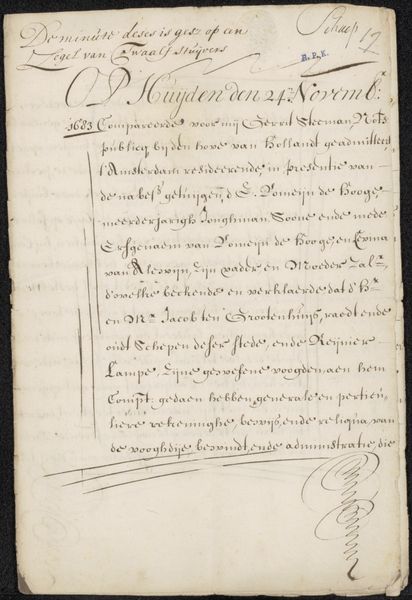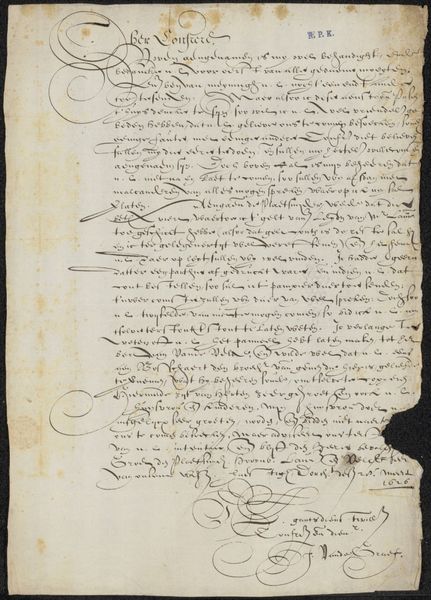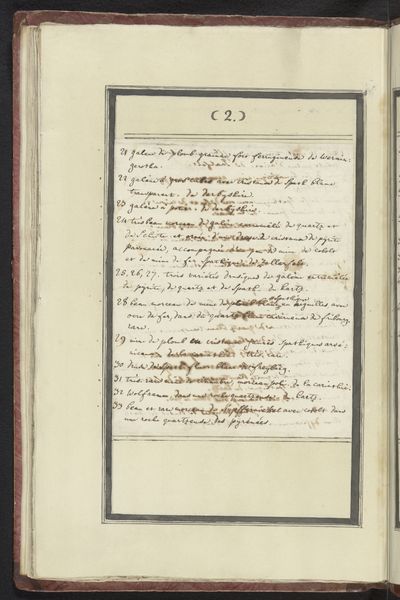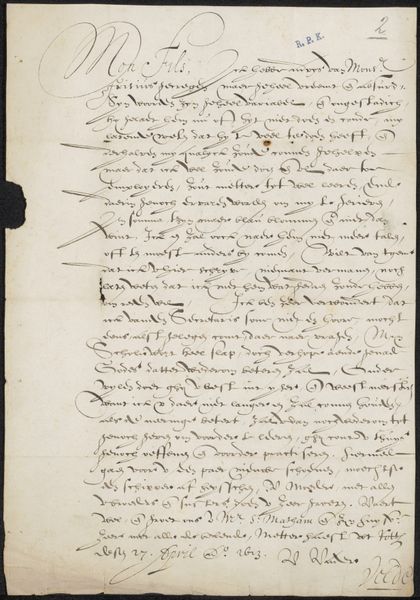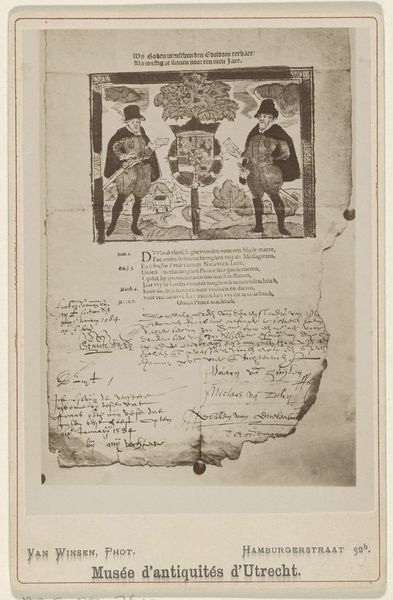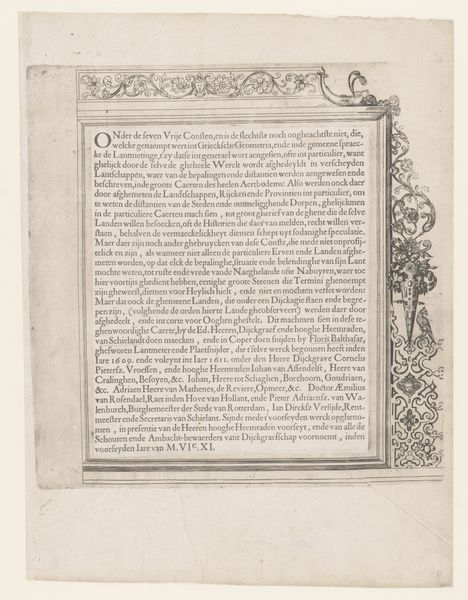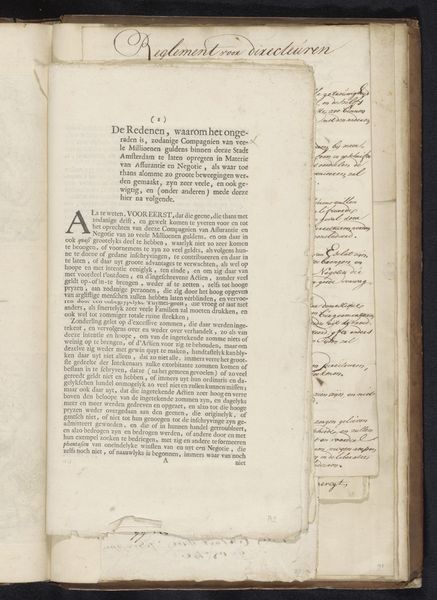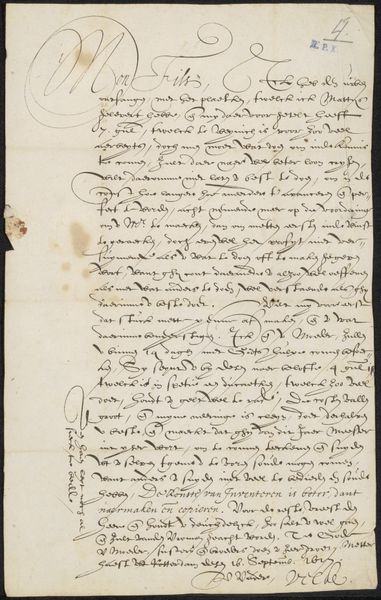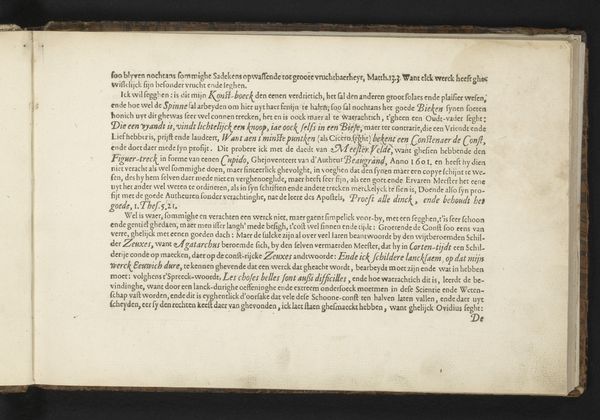
drawing, coloured-pencil, paper, ink
#
portrait
#
drawing
#
coloured-pencil
#
narrative-art
#
paper
#
ink
#
coloured pencil
#
genre-painting
#
miniature
#
watercolor
Dimensions: height 430 mm, width 270 mm
Copyright: Rijks Museum: Open Domain
This drawing by Petrus Andreas Duyrcantius illustrates the legend of the Countess who gave birth to 360 children in 1276. The central motif is a domestic scene filled with cradles containing the newborns. Childbirth, historically a symbol of life, purity, and renewal, takes on a monstrous quality here, reflecting collective anxieties around fertility and the unknown forces of nature. Consider the snake-like figure, a motif that, while absent here, is often associated with childbirth. In ancient cultures, snakes were symbols of regeneration, but they also carried connotations of danger. Similarly, the swaddled infants in their cradles remind us of the vulnerability and the precariousness of life. The sheer number of children evokes a sense of wonder and unease, stirring deep-seated fears about the uncontrollable aspects of human existence. This image isn't merely an historical anecdote; it's a potent symbol of our collective grappling with themes of life, death, and the cyclical nature of existence. The drawing underscores how these ancient archetypes persist, evolving yet fundamentally unchanged, in our shared cultural consciousness.
Comments
No comments
Be the first to comment and join the conversation on the ultimate creative platform.
